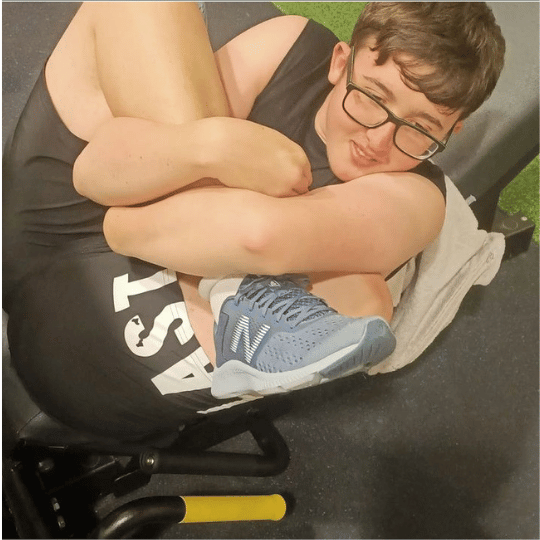What Safety Really Means in Creating Safe Spaces for Neurodiverse People
- Jase
- Jun 5
- 4 min read
Safety isn't just rules and checklists—it’s something you feel
The word trauma can be big and heavy. But it’s not always what people expect. For the guys I work with—many who are neurodivergent or have intellectual disabilities—trauma might not come from one major event. It might be years of being misunderstood, excluded, talked over, or not given a chance.
That’s why, in our programs, creating safe spaces for neurodiverse people means more than physical checks or knowing first aid (though those things matter too). It’s about emotional safety, social safety, and body-based safety.
It’s about helping someone feel relaxed in their own skin. Confident enough to give something a go. Safe enough to have a crack, win, lose, or laugh while trying.
Learning more so I can do better
Recently, I completed the Understanding the Neurobiology of Complex Trauma course through the Australian Childhood Foundation.
I'll be honest—being in a Zoom room with psychologists, social workers, and counsellors felt a bit wild for a personal trainer like me. But I found the whole thing very valuable. The presenter really knew her stuff—drawing from real-life examples, answering tough questions, and always bringing it back to practical, human stories that ended in positive outcomes. The good kind of rabbit hole.
I’m definitely still unpacking everything, but I’ve already got new ideas for how to improve what we do in sessions—ways to support trust, confidence, self-talk, and safety even more than before.
🔎 Note: I’m not qualified to diagnose or treat trauma. That’s not my lane. But my intent with this learning was to: avoid doing harm, strengthen what already works, and be part of a multi-disciplinary win using my skill set to support others doing their work.
Principle 1 — Safety is built through connection
According to Polyvagal Theory (cheers Dr. Stephen Porges), our bodies are constantly scanning for signs that we’re safe—or not. And it’s not just about danger in the environment. It’s about how people look at us, speak to us, and hold space for us.
That’s especially true when working with neurodiverse people, though it’s not always straightforward. Tone, facial expression, and body language can say a lot, but the way those cues are interpreted might be different, missed, or even feel overwhelming. That’s why consistency and clear, calm communication are key.
We build this in every session through consistency, calmness, and showing up in a regulated state ourselves. Because when someone feels safe with you, they’ll trust the process more. And when trust grows, so does everything else—confidence, connection, and capacity.
Principle 2 — Safety is physical, not just emotional
Stress and shutdown live in the body. That tension, zoning out, butterflies in the stomach—it’s not just behaviour. It’s survival mode.
But the body can also be the way back.
That’s why we don’t just “work out.” We play. We win. We laugh. We vote on what we do. We meet people where they’re at. Movement becomes a tool to help someone feel strong, relaxed, or just like they belong.
One of the biggest signs we’re doing it right? When someone who used to sit out jumps in without being asked. That shift isn’t just physical—it’s nervous system-level progress.
Principle 3 — Feeling heard is a part of feeling safe
When someone’s had their voice ignored or controlled for years, getting to have a say in what happens matters.
That’s why we build choice into the structure. The boys often vote on what we do—and usually the options come from ideas they wrote down and added to the hat. They’re not just following a plan. They’re shaping it.
It sounds simple. But it builds autonomy, confidence, and connection. It helps create safe spaces for neurodiverse people where they feel included and respected.
What it might look like when someone doesn’t feel safe
Not everyone tells their story. A lot of our crew don’t even have the words yet. But we don’t need a full background to be aware.
For someone with an intellectual disability, feeling unsafe might come from:
being excluded or isolated at school
being told “no” constantly with no explanation
having a rotating door of support workers
being spoken at, not with
never getting the chance to feel good at something
We’re not here to fix or treat people. But we are here to make sure we don’t add to the stress. That’s why we focus on consistency, fun, positive feedback, small wins, and community.
Wrapping it up
If you’ve read this far, you’ll know that creating safe spaces for neurodiverse people isn’t just the foundation—it is the work. It’s the vibe. It’s what makes everything else possible.
We build safety by showing up calm, giving people a say, keeping things consistent, and creating a place where wins are shared and effort is noticed. Whether it’s fitness, friendship, or finding your voice—it all starts with feeling safe.
If you're a parent, support worker, coordinator, or just someone looking for the right space, you’re welcome to reach out or check out what we do at www.slimgym.com.au.
And if you're a fellow professional (or sneaky trainer like me!) interested in learning more, the course I did is here:👉 Australian Childhood Foundation Training & Development
I'd give them the big thumbs up and 5/5 stars, thoroughly enjoyed it.
Here’s to making safety real, not just a buzzword.













Comments